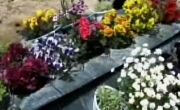This study examined the ‘in-betweenness’ as a cultural contact zone and boundary zone in the Korean American women's essays from the perspective of gender geography. In-betweenness is a space that contains the contact of heterogeneous cultures and...
http://chineseinput.net/에서 pinyin(병음)방식으로 중국어를 변환할 수 있습니다.
변환된 중국어를 복사하여 사용하시면 됩니다.
- 中文 을 입력하시려면 zhongwen을 입력하시고 space를누르시면됩니다.
- 北京 을 입력하시려면 beijing을 입력하시고 space를 누르시면 됩니다.

‘사이’, 접촉과 변용의 젠더공간 - 재미한인 여성수필을 중심으로 = ‘In-betweenness’, Gender Space of Contact and Transformation - Focusing on Korean American women’s essays
한글로보기https://www.riss.kr/link?id=A108895955
-
저자
최미정 (한국성서대학교)
- 발행기관
- 학술지명
- 권호사항
-
발행연도
2023
-
작성언어
Korean
-
주제어
재미한인 여성수필 ; 젠더지리 ; 사이 ; 정원 ; 일터 ; 사건 ; Korean American Women's Essay ; Gender Geography ; In-Betweenness ; Garden ; Workplace ; Event
-
등재정보
KCI등재
-
자료형태
학술저널
-
수록면
35-70(36쪽)
- 제공처
-
0
상세조회 -
0
다운로드
부가정보
다국어 초록 (Multilingual Abstract)
This study examined the ‘in-betweenness’ as a cultural contact zone and boundary zone in the Korean American women's essays from the perspective of gender geography. In-betweenness is a space that contains the contact of heterogeneous cultures and the possibility of transformation created by it, and "garden," "workplace," and "event," where previously unrelated things meet to create a new meaning, form the topography of a representative women's space as in-betweenness geographic and psychological. Garden is a space where public and private boundaries that belong to the house and are open to the outside intersect. It shows the possibility of creating new landscapes, spreading culture and transplanting as memories and life, the past and the present intersect. Meanwhile, 'workplace' is a kind of ‘cultural border zone’ where immigrant women come into contact with and interact with various cultures, including race, nation, class, and gender. Women experience cultural shocks and conflicts in the workplace, but they build a new identity by flexibly transforming the boundaries of the public space of the workplace based on their unique affinity and empathy. An ‘event’, where previously unrelated heterogeneous others meet and come into contact, also has meaning as an 'in-betweenness'. In particular, this shows the characteristics of emotional and psychological space. Women show themselves as active negotiators who independently cross borderlands through chance encounters and relationships, and as cultural translators who strive to convey their own language and culture to others in their own language. Here, women create new cultural meanings that are different from before, while newly interpreting and constructing the space occupied by themselves and others.
동일학술지(권/호) 다른 논문
-
- 사단법인 한국문학과예술연구소
- 박은옥
- 2023
- KCI등재
-
영역(英譯)을 통한 소월(素月) 시 세계화의 첫발 - 김동성의 Selected Poems of Kim, So-Wol -
- 사단법인 한국문학과예술연구소
- 조규익
- 2023
- KCI등재
-
- 사단법인 한국문학과예술연구소
- 김자영
- 2023
- KCI등재
-
- 사단법인 한국문학과예술연구소
- 전덕재
- 2023
- KCI등재




 KCI
KCI DBpia
DBpia






